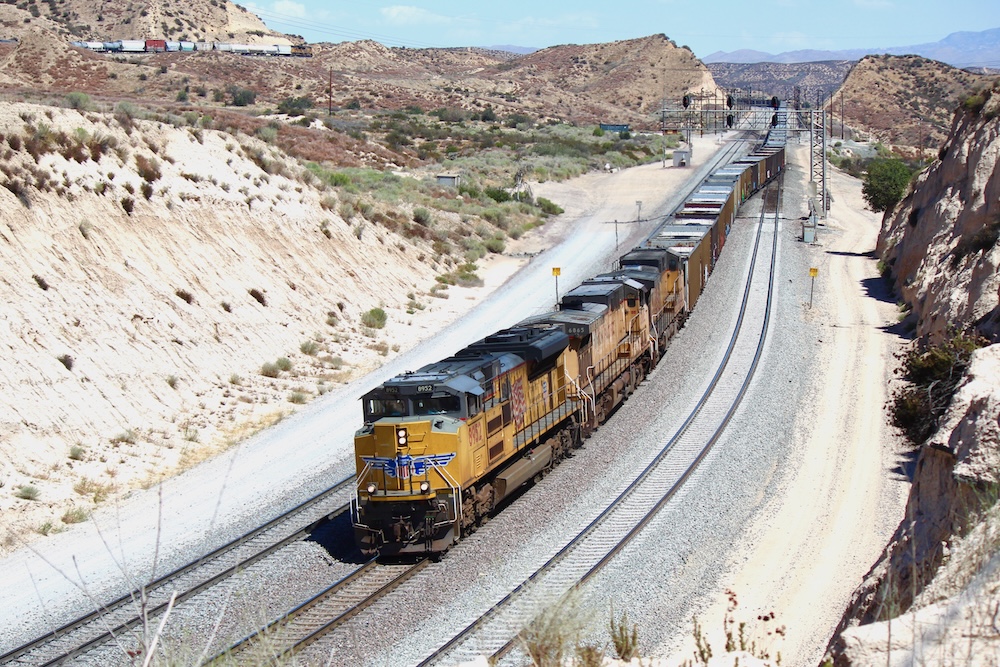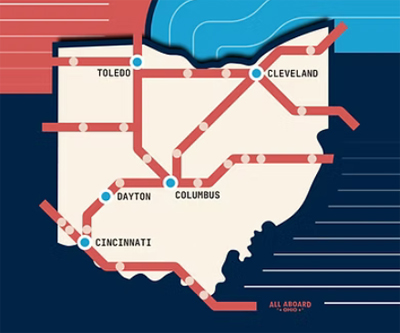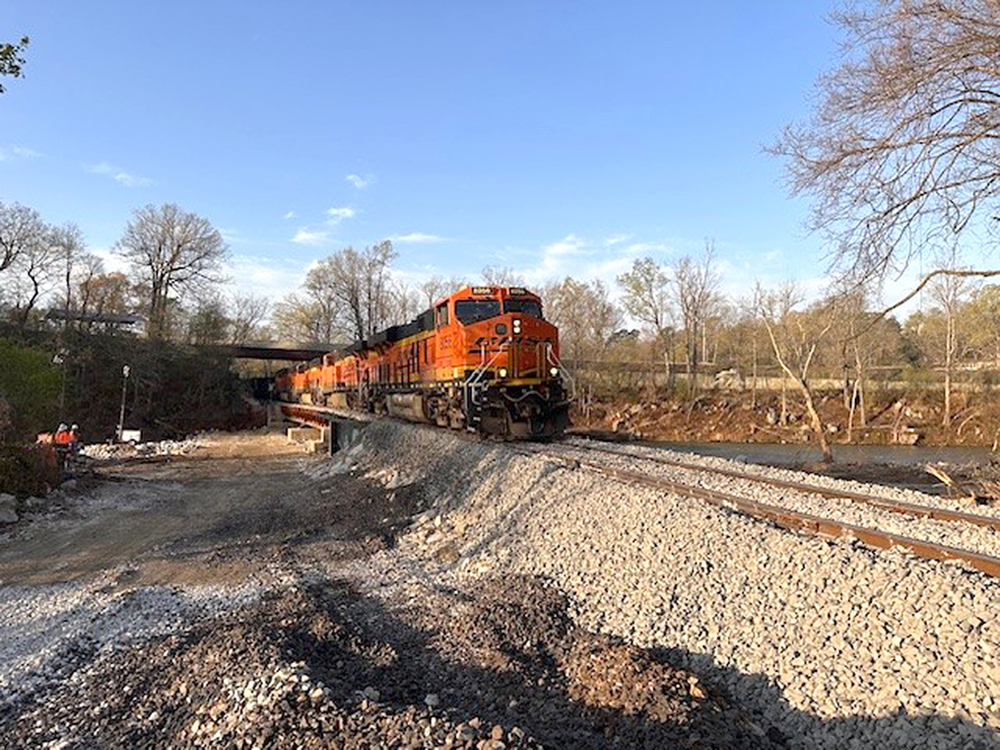Out are the cast-in handrails and roofwalks; in are add-on details, such as see-through roofwalk grates, rooftop brake wheels with shafts, wire grab irons, and more wood texture than you can find at Jellystone National Forest.
A guy I once knew had exactly one tag line – a phrase that he could be counted on to use each and every time the right circumstances appeared. What was that line? “Go big, or stay at home.”
That, for me, sums up the starter sets offered by S-Helper Service. The quality that you see in its regular product line is the same quality you find in its starter set. We tested the no. 01616 St. Louis-San Francisco (Frisco) four-car diesel freight set and can confidently say that it is a great introduction to the S gauge world.
The four-car set, by the way, is also available with sound and in the Conrail road name as well as the Frisco.
The locomotive
When S-Helper Service did its first locomotive, the SW9, (reviewed in the September 1998 issue), that diesel was among the most finely detailed locomotives of the year in any gauge. Comparing it to an American Flyer Baldwin switcher (either the postwar or modern Lionel-produced version), there is absolutely no doubt as to which is the toy and which is the scale model.
The Frisco version we examined shows that this diesel is still a leader. The cast-in texture is first-rate, and there is no shortage of rivet, hinge, or latch detail. The handrails and grab irons on both pilots deserve special mention. While fragile, they are also beautifully formed for a delicate look. Painted white, they really stand out.
Running down the long hood of the model, you’ll find a handrail that is mounted with a prototypical hook or stanchion (check Diesel Locomotives: The First 50 Years to see what I mean). It would have been easy for S-Helper Service to cut some corners and go for something straight-forward like the loop of a needle, but its designers got the small details right.
The red-and-white Frisco paint scheme is one of my all-time favorites, due to the striking contrast between the red and white. There is plenty of opportunity to have a sloppy paint job here, but the lines between colors are all razor sharp. No fuzziness or ghosting, absolutely nothing to distract from the look of the locomotive.
The locomotive’s performance is excellent. Readers will note that we rarely review anything using DC power supplies, but fear not. I ran the SW9 with both the no. 5400 DC power supply from the set and an MTH AC Z-4000 transformer, and the locomotive performed well with both.
Our low-end speed test average was 3.3 scale mph, and our high-end test average was 62.8 scale mph. Drawbar pull for the locomotive was 7 ounces.
The rolling stock
The train set includes a Burlington Northern PS-2 two-bay covered hopper, a Missouri-Kansas-Texas single-sheath boxcar, a St. Louis-San Francisco (Frisco) 40-foot rebuilt boxcar, and a St. Louis-San Francisco extended-vision caboose.
The rolling stock is a virtual hall of fame, so to speak, of S-Helper Service’s milestone cars. Let’s talk about the things they have in common. Each car has American Flyer-compatible knuckle couplers and die-cast metal trucks and wheels.
The grab irons are wire – not plastic add-ons. The rooftop walkways are appropriate to the car. The two older-style boxcars have simulated wooden roofwalks with cast-in texture, and the hopper and caboose have intricate see-through walkways.
The separately applied brake wheels on the freight cars have chains running to a rod that you can follow to the frame. On the undersides, you’ll find a full range of details, such as an I-beam frame on the boxcars, rather than a square piece of plastic, and simulated brake lines. The bottom of the two boxcars has simulated wood planking with texture! Yes, you read that right – the interior and outside floors have detail. What a concept.
As is befitting the prototype car, the two-bay hopper is smooth except for outside supports and the standard detail items. The four bays have sealed hatches, as well as simulated release levers.
The extended-vision caboose is a four-star attraction. The superb exterior appearance includes intricate supports on both ends and the ladders. S-Helper Service’s extended-vision cabooses may or may not have roofwalks, depending on what is prototypical for the given road name. The Frisco version features them, as well as an array of grab irons around the cupola that looks great.
The cupola is manned, and you’ll find wiper arms on the windows. Peer into the windows and you’ll see illumination and interior detail, such as bunks, seats, and tables. Speaking of illumination, the car has rear marker lights.
As for the decoration of the cars, I wasn’t disappointed. I expected S-Helper Service to cut some corners to make this outfit as affordable as it is, but I was wrong. The equipment in this set received the same outstanding decoration as any other product in the cataloged line.
Paint and color separation are clear and crisp. Nomenclature, such as “Clean inside grates and top of slide door before moving,” was readable. And I’m still amazed by the clarity of the initials and numbers applied to the outward curving ribs on the ends of the boxcars. S-Helper Service didn’t spare the guilders making this outfit.
Track and power

The track included in the set is made by S-Helper Service. I use this track system on my S gauge layout at home and recommend it highly. The S-Trax plastic roadbed is lightweight and durable.
The roadbed offers you texture that you can feel with your fingertip. It has a gray/brown/black look that mirrors colors you might find gazing at your local main line.
You mate the track sections by connecting the male locking tabs with the female slots, as well as sliding the rails into waiting rail joiners. The rails are scale sized, and I’ve found my postwar locomotives and cars run well on it. The sections fit together nicely, and electrical connectivity is great.
With this set, S-Helper Service includes a no. 5400 power supply that provides 22VA maximum output (0-21V DC for operation and 15V AC for accessories).
As is common with DC power supplies, there is a three-position stop-forward-reverse control and a speed knob. The power-output slots for both DC (colored red) and AC (colored black) have a simple tab. Connecting wires are included with the set. Just depress the appropriate tab, slip the wire in, and release to get a snug fit.
This power supply will be more than adequate for running the outfit under a Christmas tree, or starting out that new S gauge empire in the basement.
Rightly or wrongly, regardless of scale, all too often the words “starter” and “set” are associated with “cheaply made, cheaply priced, and guaranteed to break.”
S-Helper Service’s starter sets surge beyond that stereotype and are a great way to introduce anyone – child or adult – to model railroading in general or S gauge in particular.
As that old buddy of mine would say: “Go big, or stay at home.” S-Helper decided to go big.













